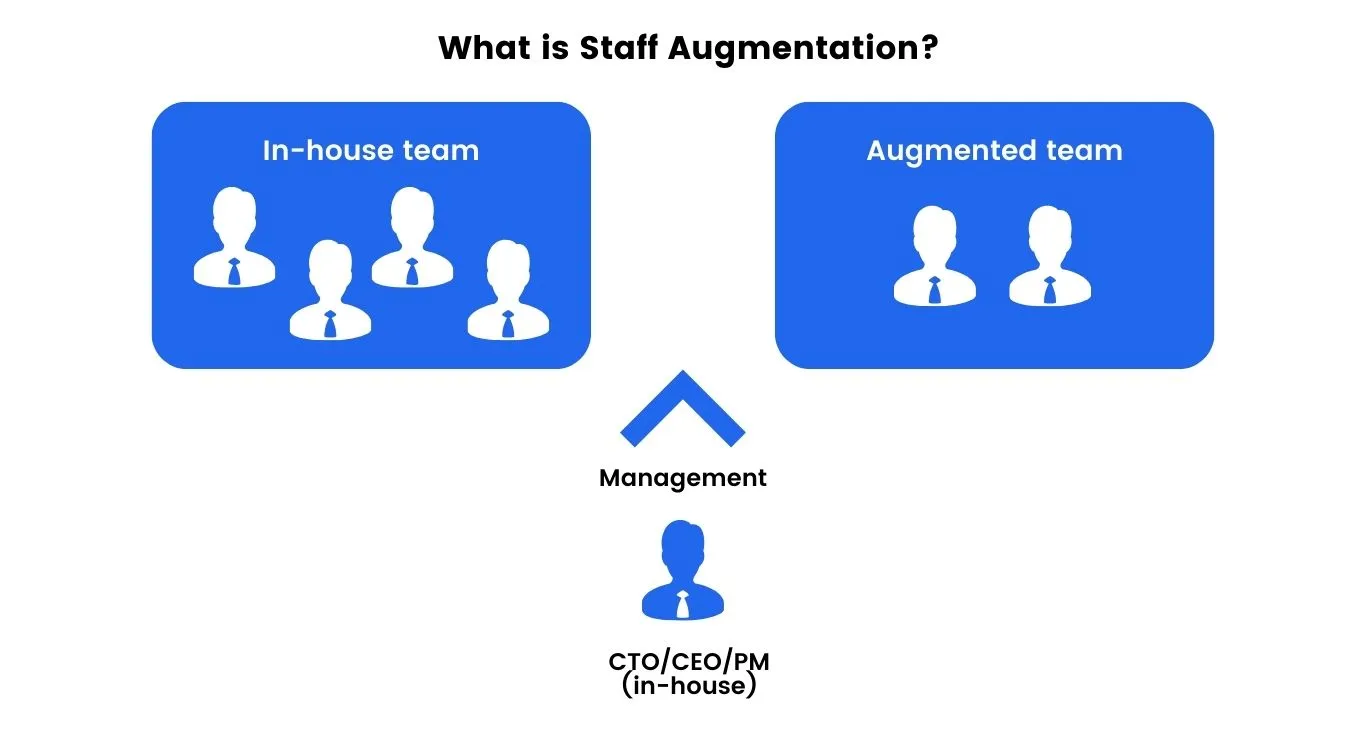Outsourcing to Czechia

How much does it cost to hire developers in Czechia?
Dec 2nd 25 - by Devico Team
Find out how much it costs to hire software developers in Czechia in 2025. Compare hourly rates, roles, and factors that impact pricing.
Hire
Hire by role
Hire Front-end developers
Hire Back-end developers
Hire Full-stack developers
Hire Android developers
Hire iOS developers
Hire Mobile developers
Hire AI engineers
Hire ML engineers
Hire Automation QA engineers
Hire Blockchain developers
Hire Data engineers
Hire Cloud engineers
Hire by skill
Hire JavaScript developers
Hire TypeScript developers
Hire Ruby on Rails developers
Hire React Native developers
Hire Flutter developers
Hire Golang developers
Hire React.js developers
Hire Python developers
Hire PHP developers
Hire .NET developers
Hire Java developers
Hire Laravel developers

Staff augmentation
January 02, 2024 - by Devico Team
Summarize with:
The technology skills gap remains a major obstacle to business growth worldwide, particularly in IT. According to Statista, nearly 70% of employers reported a tech talent shortage in recent years.
The primary drivers are digitalization, which fuels global demand for skilled IT professionals, and rapid technological change, which limits the ability to train specialists in emerging fields quickly enough.
For most employers, searching for talent in cutting-edge technologies feels like chasing a unicorn. Yet the challenge isn’t limited to the newest fields, businesses running on legacy stacks often face just as much difficulty finding specialists to support and maintain them.
In general, the most challenging IT hires these days are AI developers, especially experts in computer vision and ML developers, DevOps engineers, cybersecurity specialists, neural network developers, and experts in quantum programming.
Technology skills gap significantly impacts IT companies, influencing workloads, performance, innovation, output quality, adaptability, user satisfaction, and ultimately profitability. In response, companies are rethinking their hiring strategies and 32% of them are replacing full-time employees with staff augmentation services as a cost-saving measure and effective, timely solution to close talent gaps.

Rising skill shortages in IT have paved the way for staff augmentation. Designed to be agile, cost-efficient, and straightforward, this model is gaining momentum as more companies adopt it to meet project needs.
Through staff augmentation, businesses can engage skilled professionals on a temporary basis to complete targeted projects or tasks. This outsourcing subtype model removes the limits of local recruitment and provides access to a worldwide pool of talent, ensuring that the right expertise can be added to any team.
By avoiding long-term commitments, staff augmentation offers businesses a flexible alternative to traditional outsourcing. Rather than hiring a full team, companies can selectively engage individual experts to meet precise project needs.
Tech staff augmentation offers clear benefits: cost savings, rapid capacity growth, and on-time project completion, all while avoiding long-term hiring commitments. Yet since augmented staff typically operate remotely, businesses should be prepared to invest additional effort in coordination and effective team management.
For companies that have embraced remote work since the COVID-19 pandemic, managing augmented staff feels no different from coordinating internal teams. The takeaway is clear: external staff augmentation skills can be a valuable tool for achieving ambitious goals and sustaining competitiveness.
Staff augmentation is deemed to be a highly effective method for addressing technology skills gap within companies. It comes with a multitude of benefits that contribute to bridging these gaps effectively.
Key ways tech staff augmentation bridges tech talent gaps:
1. Going beyond your local job market. Staff augmentation removes geographical limits, giving companies direct access to international talent pools. This global reach accelerates the process of finding specialists with the right expertise. 80% of US businesses have increased their reliance on staff augmentation to access specialized skills.
2. Engaging specialists without any long-term commitments. By eliminating the need for permanent contracts, staff augmentation offers a flexible solution for project-based or highly specialized work. It allows companies to access the right expertise without incurring the cost of full-time hires.
3. Adapting to fluctuating workloads in the blink of an eye. At its core, staff augmentation is about flexibility. It enables companies to expand or reduce their teams in line with shifting workloads, ensuring that skill gaps are managed effectively when they appear.
4. Bringing in specialists at affordable rates. One factor behind persistent skill gaps is the high cost of local talent. Staff augmentation mitigates this challenge by connecting companies with experienced IT specialists in regions where salary expectations are lower, allowing access to top expertise at reduced expense.**

5. Wasting no time on durable recruitment and hiring processes. Staff augmentation provides a more streamlined hiring process, but there is more. As a rule, staff augmentation employees are seasoned and need less training and onboarding than new hires. This accelerates project timelines.
6. Promoting a knowledge-sharing culture. Staff augmentation comes with natural knowledge transfer if close collaboration is established between all team members. External experts can train in-house personnel, which, over time, leads to the development of significant internal expertise.
7. Providing access to extremely diverse skills. Staff augmentation providers usually maintain teams of the most diverse IT professionals, who continually polish their skills through exposure to various projects. This diversity allows companies to address multiple skill gaps, ensuring a well-rounded and capable workforce.
Staff augmentation addresses skill gaps while delivering a variety of additional benefits. For example, one of Devico’s clients, a small Swiss company, struggled to acquire and retain IT professionals. In Switzerland, a limited labor pool and strong competition from large employers like Google make recruitment particularly challenging.
To attract top talent, the client was forced to offer high salaries, extensive benefits, and career development opportunities. This approach to close the tech talent gap has proved unsustainable. The board of directors ultimately chose staff augmentation to address skill gaps while reducing costs. After several years of collaboration, the company now regards this model as the most effective solution for businesses of its size.
For more details on this success story, tune in to the Devico Breakfast Bar episode featuring Janosch Greber, the VP of Engineering at RealTyme.
Now that the basics of staff augmentation are clear, it’s time to see how this model stacks up against traditional hiring in different areas.
Staff augmentation opens access to a global talent pool, enabling companies to identify and engage specialists with even the rarest skills quickly.
Traditional hiring is usually limited to the local job market only, which may sometimes result in the inability to quickly fill a vacancy.
With staff augmentation, companies can acquire highly professional IT specialists at a lower rate compared to those in your country. Just pay attention to offshore service providers.
Traditional hiring requires companies to cover high salaries along with additional expenses such as training, benefits, taxes, office maintenance, and equipment
Staff augmentation simplifies hiring. Providers match your requirements against their talent pools and deliver pre-screened candidates. Interviews can be conducted for confirmation, but the process remains far quicker and easier than traditional recruitment.
Traditional recruitment is a lengthy process. It requires scanning the job market, conducting multiple interviews, and, once a suitable candidate is identified, often entering into negotiations to secure their acceptance. In many cases, an additional one to two months must be factored in for notice periods.
Staff augmentation relieves you of the lion’s share of administrative tasks. Consequently, you and your in-house staff have more time to focus on other critical matters.
Traditional employment involves numerous administrative tasks related to payroll payments, leave management, staff retention, professional training, and more.
Staff augmentation offers unparalleled flexibility. You may swiftly and painlessly increase or decrease the number of specialists on your team based on your current project needs.
Traditional hiring is more rigid in these terms, as it is usually exposed to the restrictions applied by labor laws and contract terms.
While all security requirements are discussed with a staff augmentation vendor in advance and included in a contract, it may not be enough for projects where security is of the highest priority.
Traditional hiring offers direct control over adherence to corporate security policies since all employees usually work under the same roof.
Augmented staff requires more effort in terms of work planning, coordination, and supervision. However, if remote working is a common practice at your company, you may not notice a significant difference in managing internal and external team members.
Obviously, managing in-house employees is easier, especially if you work offline or use a hybrid model. Seeing people face-to-face in an office almost every day not only simplifies their management but also fosters better relationships within a team.
Both traditional hiring and staff augmentation come with trade-offs. Your decision should be guided by budget, project requirements, deadlines, security considerations, and the way your organization prefers to operate.
Once you’ve chosen staff augmentation as your strategy, the next step is to choose a staff augmentation partner. Not all providers are equal, so careful vetting is critical.
Here are the key aspects to consider when making your choice of staff augmentation vendor:
Experience
Does a service provider understand the specific needs and challenges of your industry?
Do they have a pool of qualified professionals with the necessary skills and experience for your project?
Have they already worked on projects similar to yours?
How many years of commercial experience do their specialists have on average?
Collaboration
Is a service vendor transparent in their processes, timelines, and costs?
Does the provided staff have a good command of English?
Can they seamlessly integrate and collaborate with your in-house team?
Can they quickly adapt to your evolving needs and project scope?
Does a staff augmentation company fit into your company's culture?
Reputation
Does a staff augmentation company have a proven track record?
What do their former clients say about working with them?
What rates do they have on trusted platforms like Clutch, GoodFirms, G2, The Manifest, etc.?
Do they have any industry awards and recognitions?
Talent pool
Is the talent pool of your service provider extensive enough to cover your needs?
Is it diverse enough to provide you with any IT specialist with any skill set you need?
What is the distribution of senior and mid-level specialists in their talent pool?
Geographic location
Do you consider collaboration with nearshore and offshore service providers?
What time zones do you consider?
How many overlapping working hours would you like to have?
Price policy
What price models does a service provider offer?
Is its price policy clear and transparent?
Can you afford a price?
Isn’t the price suspiciously too low, even for an offshore company?
Security
Is the augmented staff ready to sign an NDA?
Do the data security measures of a staff augmentation company comply with your requirements and industry standards?
Are the staff augmentation company’s employees trained regularly on security best practices and protocols?
What measures are in place to prevent unauthorized access to systems and data?
Making an informed decision requires careful consideration of multiple factors. By dedicating time to this analysis, you can secure a staff augmentation partner fully suited to your business goals.
Staff augmentation can significantly enhance your business capabilities. However, to use its potential to its full extent, it's essential to adopt best practices that maximize the benefits of staff augmentation. Let’s have a look at some of them:
Set clear project objectives.
Start by defining your objectives, project scope, and the exact skills you require from augmented staff. A clear vision will guide your selection process.
Define your expectations clearly.
Before choosing an augmented team member, outline what expertise, experience, hard skills, and soft skills they should possess.
Ensure seamless onboarding.
Introduce a robust onboarding process to integrate augmented staff seamlessly. Provide them with access to documentation, resources, tools, and training to get them up to speed as quickly as possible.
Promote transparent communication.
Cultivate transparent and trusted communication between your internal and augmented teams, as it lies behind every successful collaboration. Encourage regular meetings, frequent updates, and the exchange of ideas to maintain team synergy.
Ensure efficient team management.
A unified project management approach encompassing both in-house and augmented teams can be of great help. Also, leverage modern collaboration platforms and project management tools to streamline workflows.
Host team-building activities.
Organize diverse team-building activities and engage augmented staff in them. Both virtual and in-person events strengthen bonds and improve collaboration.
Regularly evaluate performance.
Assess the performance of your augmented staff on an ongoing basis. Provide constructive feedback if needed, and always recognize achievements to motivate the team and improve results.
By implementing these practices, you can leverage the full potential of team augmentation and achieve greater success in your projects.
Staff augmentation not only bridges skill gaps but also delivers advantages like lower costs, faster hiring, and fewer administrative burdens.
If your local market can’t deliver the talent you need, staff augmentation opens the door to global expertise. With instant access to a worldwide pool, you can secure the right specialist far more quickly.
Success with staff augmentation comes down to clarity and partnership: define your needs, choose a trusted provider, and manage your remote team with confidence.
Ready to see how it works? Book a call with our team and discover how this model can help your company break free from old limitations and achieve its full potential.
Outsourcing to Czechia

Dec 2nd 25 - by Devico Team
Find out how much it costs to hire software developers in Czechia in 2025. Compare hourly rates, roles, and factors that impact pricing.
Outsourcing to Czechia

Nov 25th 25 - by Devico Team
Compare Czechia and Poland for software outsourcing in 2025. Discover costs, talent, infrastructure, and which country fits your project best.
Outsourcing to Czechia

Nov 18th 25 - by Devico Team
A complete guide to outsourcing software projects to Czechia, learn about costs, talent, benefits, and how to build successful partnerships in 2025.